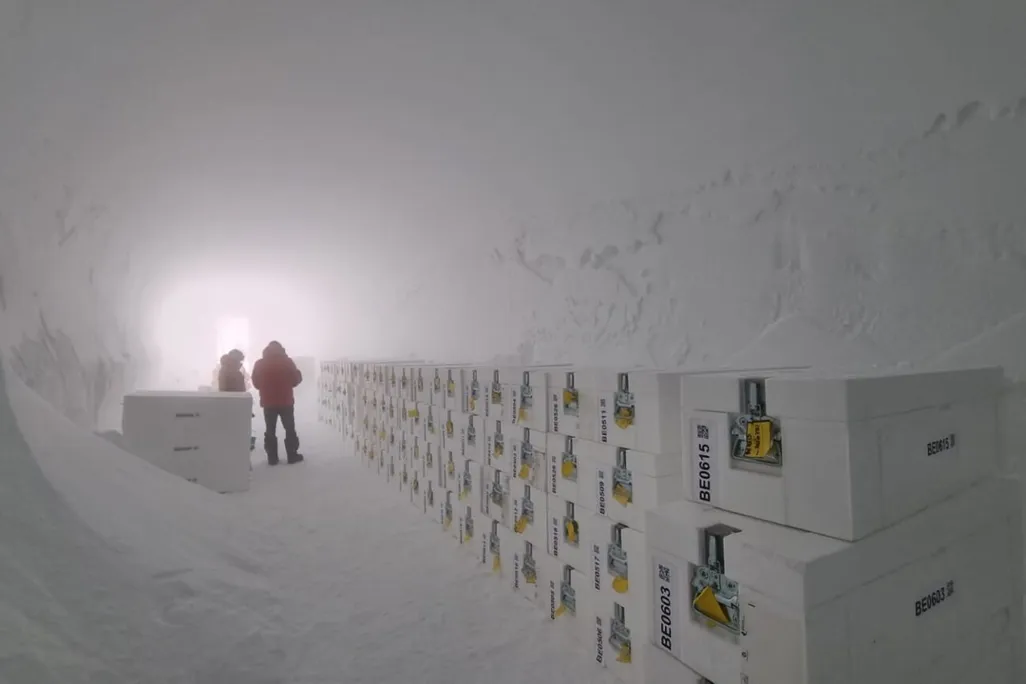Scientists Will Melt the World’s ‘Oldest Ice’ to Reveal Its Secrets and Uncover a Climate Record of 1.5 Million Years
The ice cores could offer clues about a period known as the Mid-Pleistocene Transition that has long puzzled scientists

Researchers in the United Kingdom plan to melt ancient ice cores from Antarctica to uncover climate history. The cylinders of ice were recovered earlier this year from up to 2,800 meters—more than 9,000 feet—deep in the Antarctic Plateau and have now made it to a freezer room at the British Antarctic Survey.
Scientists expect the cores—some of the oldest ice ever recovered—will contain a record of the climate as far back as 1.5 million years ago.
“This is a really exciting project to work on, because we really are exploring a completely unknown time in our history, and what we’re hoping is we’re going to unlock all these amazing secrets,” says Liz Thomas, a paleoclimatologist and head of the ice cores team at the British Antarctic Survey, to Reuters.
Over seven weeks, Thomas and her team will slowly melt the ice and measure the released particles—including dust, algae and ash—along with chemical elements and isotopic data. The results will paint a picture of the prehistoric Earth using a specialized technique called continuous flow analysis—and the team’s lab is one of the only places in the world that can do this work. The unlocked materials will be able to tell the scientists about past wind patterns, temperature and sea levels, reports Georgina Rannard at the BBC.
Air bubbles trapped in the ice will also offer snapshots of prehistoric atmospheric conditions. “There is no other place on Earth that retains such a long record of the past atmosphere as Antarctica,” Thomas says in a statement. “It’s our best hope to understand the fundamental drivers of Earth’s climate shifts.”
Key concept: Exploring the prehistoric climate
Researchers have typically used marine sediment cores drilled from deep beneath the oceans to understand Earth’s past climate, since they capture information about glacial cycles. But ice cores offer unique information in their trapped air bubbles, opening a window into conditions in the atmosphere.
The team is hoping to answer long-held questions about greenhouse gases between 800,000 and 1.2 million years ago during a time known as the Mid-Pleistocene Transition, when the Earth’s glacial cycles suddenly shifted. Before then, evidence suggests the planet experienced glacial periods roughly every 41,000 years, but that cycle slowed down to 100,000 years in the Mid-Pleistocene. Scientists still don’t know why this shift happened, though various studies have offered hypotheses, including changes in atmospheric CO2 conditions or Earth’s orbit around the sun.
Now, the ice cores could offer the most direct information to date about greenhouse gas composition during this period.
“Our climate system has been through so many different changes that we really need to be able to go back in time to understand these different processes and different tipping points,” Thomas tells the BBC.
The research will also allow scientists to better understand the impacts of current climate change. During the Mid-Pleistocene, “the ice sheets were actually smaller, sea levels were potentially higher and CO2 similar to today,” Thomas tells Reuters, so having information about that era could help researchers model responses to climate change.
“This unprecedented ice core data set will provide vital insights into the link between atmospheric CO2 levels and climate during a previously uncharted period in Earth’s history, offering valuable context for predicting future climate change,” she adds in the statement.

